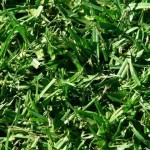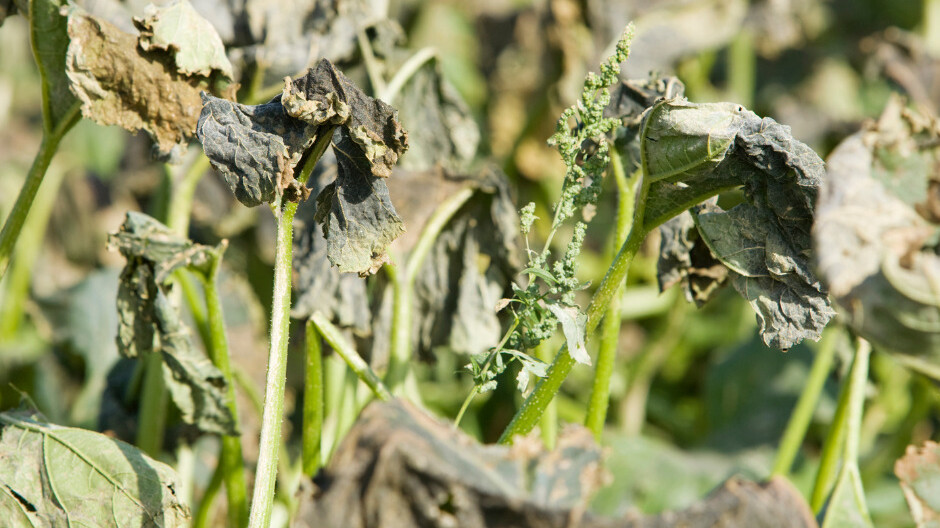For the most sustainable lawn, SGA prefers Autralian native grasses rather than varieties that can become invasive. However, we recognise that many people really want the appearance and growth properties of grasses like Kikuyu or Buffalo. So Charlie Muscat tells us below which varieties of turf are more sustainable in terms of water use and how to care for them. To minimise unwanted spread, please remember to mow them before they set seed, to clip runners before they enter garden beds and to dispose of these so they cannot take root elsewhere.
Charlie writes:
Watering effectively is a crucial element of any lawn maintenance program. With the right choice of lawn, preparation and knowledge, however, you can keep watering to a minimum, saving time and money. How often your lawn needs water depends on lawn variety, soil type and its moisture retention, local climate, as well as water access and cost.
Lawn Variety
Low rainfall and the rising price of water in many Australian cities can affect people’s decision to install a lawn at all. The good news is that many lawn varieties today are drought-tolerant.

Most even come with official water ratings to alert you in advance to their moisture requirements over time. Examples of turf varieties with low water needs are Kikuyu and Sir Walter Buffalo.

Each has a five-star rating (the highest available); and Santa Ana Couch, which is four-star water-rated.
Lawn varieties requiring more water than these are ideal where rain water tanks or other water recycling systems are in use, or where you can depend on a high rainfall, particularly during summer. Appropriate species selection is vital and should consider the natural variations in your local climate.
Watering frequency
It surprises most people, but one thing you can be certain of is that less frequent, deep watering is the best way to keep a healthy lawn over the long-term. An occasional soaking is much better for your turf’s general health than regular, shallow watering. By watering less frequently but for a longer time, you are able to send the water deep into the soil. This encourages a stronger and deeper root system that will be better equipped to handle the dryer spells and even drought. And some grasses, like Kikuyu, will recover from browning off during a long dry spell. So there is no need to keep the lawn looking “perfect” all the time if water is an issue.
Water timing & quantity
The best time to water your turf early is in the morning, for two reasons. It helps prevent moisture loss through evaporation and reduces the chance of fungal disease, which can occur when night falls soon after watering. It’s important to know how much water you are using on your lawn to ensure you’re giving it enough to moisten the soil sufficiently and prevent waste from over-watering. The perfect balance is to water your lawn enough to soak the root zone on each occasion.
Easy water penetration-testing
You can test your lawn’s moisture penetration with high accuracy using a soil moisture probe, as used by the serious lawn enthusiasts and landscape professionals. Another way of determining the success of your turf watering regimen is to push a screwdriver into your lawn. Ideally, the screwdriver would be able to reach 25cm beneath the surface. But in many locations, this depth simply isn’t available, due to the topography. Generally, a 15 to 20cm depth indicates a good foundation for receiving and retaining lawn moisture in the event of a good downfall of rain or deep soaking. The soft soil depth available indicates your lawn’s moisture content – while resistance at a shallower depth indicates compacted, dry soil too close to the surface – and a lack of water for healthy turf. Results will be variable depending on soil type. For example, sandy soils will be softer, due to their open structure.
When to water your lawn
Over-watering is bad for your lawn, your wallet and the environment; in fact, it’s a total waste of time and should be avoided at all costs.
If you can’t depend on rainfall, your lawn will let you know when it needs water, by giving these signals:
* Wilting or losing colour
* Not springing back when you walk on it
* Grass turning dry, crackly and yellowing or turning light brown
And remember, if you’re still not sure about watering, try the screwdriver test before turning your hose or sprinkler system on.
Lawns and the Environment
Today’s lawn varieties are designed to be resilient to the prevailing conditions, with different types tolerating excessive shade or sun,  drought, wear and tear and low-maintenance, including infrequent (but deep) watering. Being well-informed about the variety to install and its tolerance of your local conditions contributes to personal environmental care. The role of lawn fertilisers is largely to prevent weed infestation. Safer, sustainable products are commonly used and recommended by turf and landscaping professionals today. In general, if lawn moisture is maintained as your lawn variety requires, the healthier your lawn will be, keeping weeds out naturally.
drought, wear and tear and low-maintenance, including infrequent (but deep) watering. Being well-informed about the variety to install and its tolerance of your local conditions contributes to personal environmental care. The role of lawn fertilisers is largely to prevent weed infestation. Safer, sustainable products are commonly used and recommended by turf and landscaping professionals today. In general, if lawn moisture is maintained as your lawn variety requires, the healthier your lawn will be, keeping weeds out naturally.
Lawns also play the part of cooling the immediate surrounds of our home and other environments. A well-kept, healthy lawn is an inviting, multi-purpose asset within any built environment.
Nature’s resilience
Finally, when considering a new lawn, it should be remembered that resilience is built in to several ‘summer grasses’. The most successful turf varieties have been specifically developed survive long, dry spells and recover to their former glory after being affected by extreme heat. Though your lawn may suffer in appearance for the short-term during summer, you can be assured that by careful turf selection in the first place, it has been designed to recover naturally and will thrive again as part of its seasonal cycle.
Text and photos by Charlie Muscat.
About the author: in 1995, Charlie, along with his father Sam and wife Anne, started their turf business called Active Turf. They started with only a small 5 acre patch which has grown along the years to a successful company that employs 4 people. Active Turf (http://www.activeturf.com.au) services the whole Sydney region and also provides turf to Newcastle area and Wollongong areas.
Related Articles:
Thriving in the Heat: Managing Plant Heat Stress
As the mercury rises, your garden confronts the challenge of heat stress. Understanding how various plants respond to heat and employing appropriate…
Water Smart Gardening 101 Video
Sustainable Gardening 101 Video Series PART 4: Water Smart Gardening As the climate changes we need to take extra care to design water smart gardens.…



